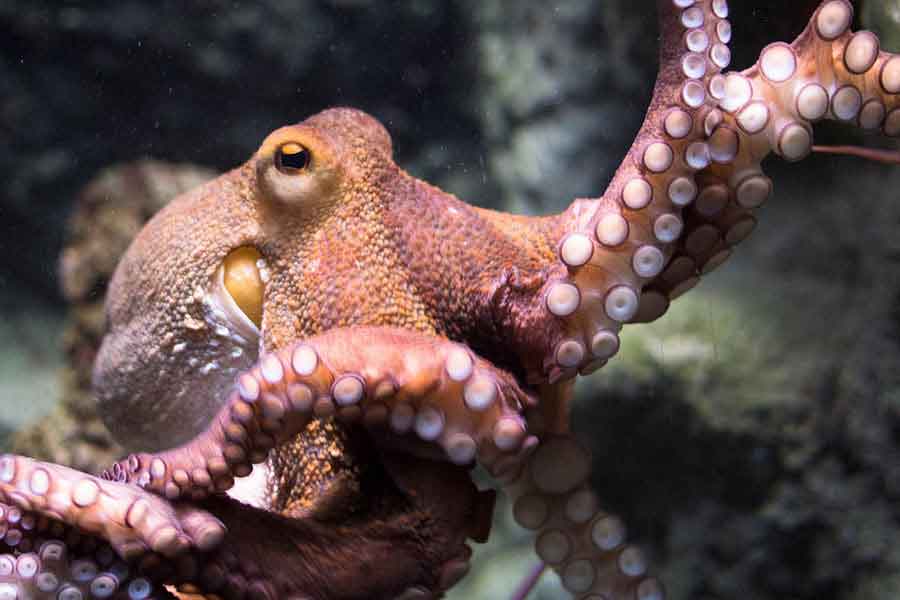
After the male octopus fertilizes the eggs in the female’s mantle, she seeks a small cave in the rocks. Once she finds a suitable spot, she attaches a complete series of eggs in a thin strip of gelatin, fixing one end to the ceiling of the cave. These vertical clusters resemble small strings of garlic and can contain up to 1,000 eggs, each measuring 6 mm in length. A female octopus can lay up to 180,000 eggs in just two weeks.
For a period of three months, the mother octopus will single-handedly guard her offspring, warding off predators that try to feed on them. Meanwhile, using her tentacles armed with powerful suckers, she will polish the outer surface of the egg clusters, keeping them free from dirt and vegetation. She also utilizes her water siphons, which serve as propulsion devices, to expel small jets of water between the rows of eggs, removing any tiny particles of dirt that could contaminate them.
The dedication of the mother octopus is such that during these three months, she will not leave the cave for even a second, not even to feed. Even if food were within reach of her tentacles, she will continue cleaning her eggs without paying any attention to it. At the end of this time, the little octopuses will hatch, and their mother, exhausted from all the care, will inevitably die. The young octopuses will be left to fend for themselves in a world where size and cunning will decide between life and death. Octopuses possess a bit of both; in a few weeks, they will significantly increase their weight and demonstrate enviable intelligence in the sea. Despite that, only a few individuals will reach adulthood to repeat the sacred cycle of reproduction.
«You cannot defend what you do not love, and you cannot love what you do not know.»

